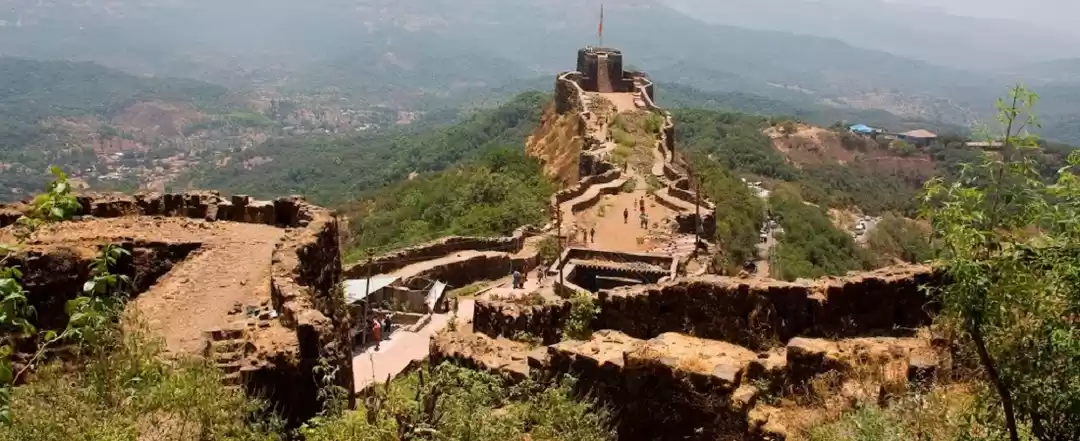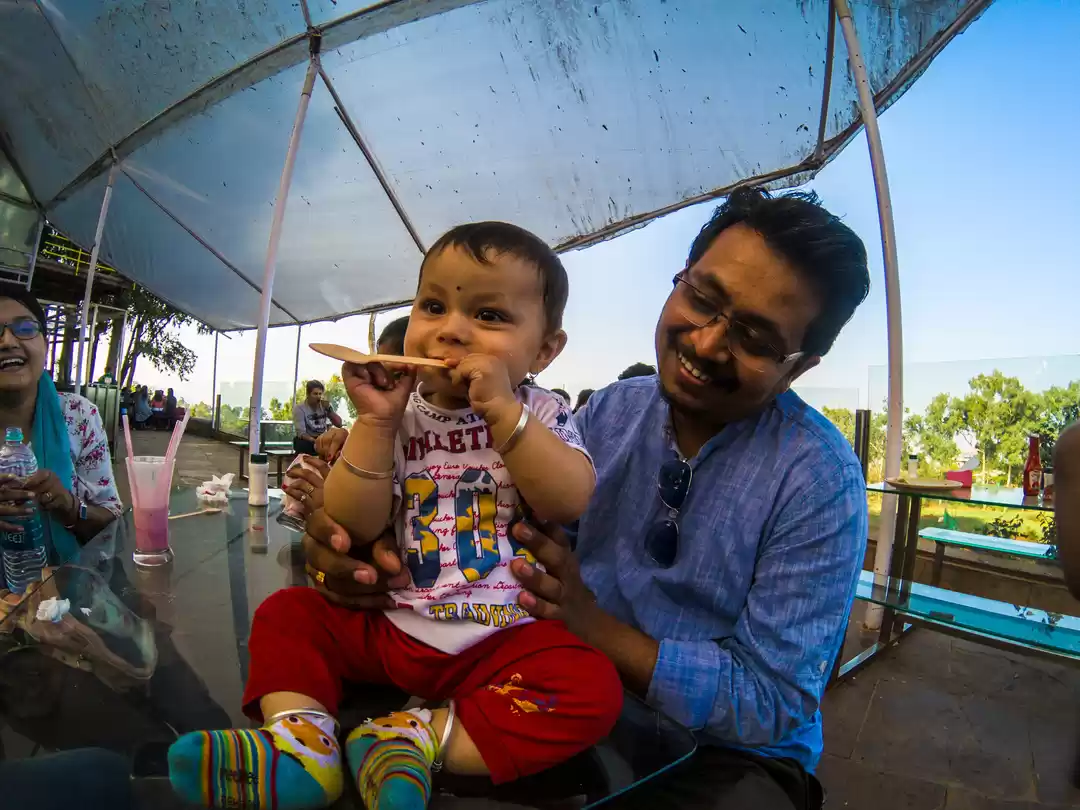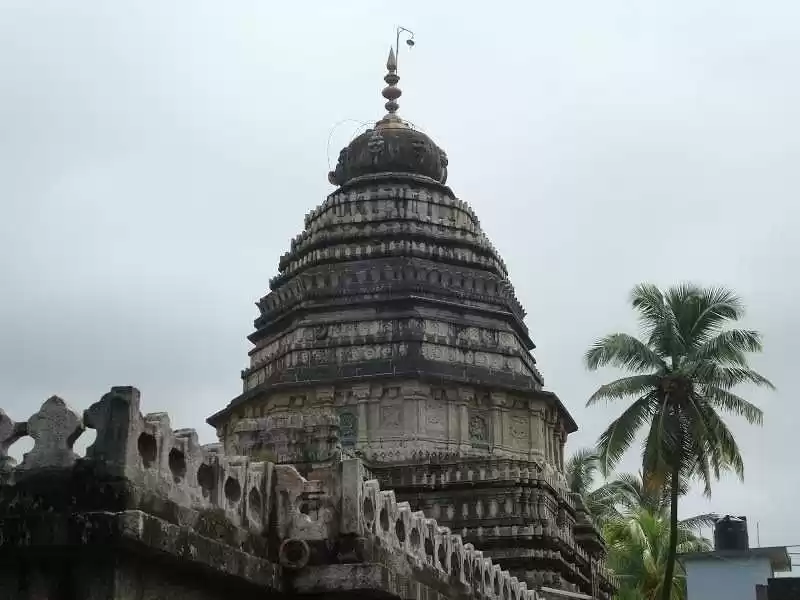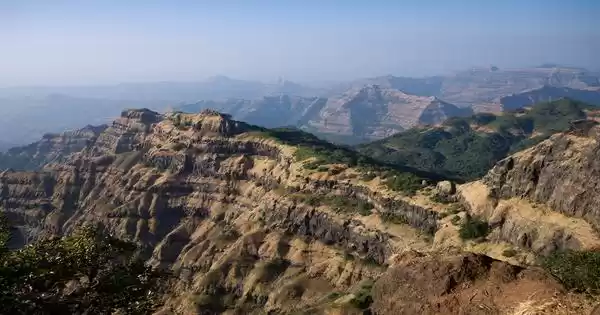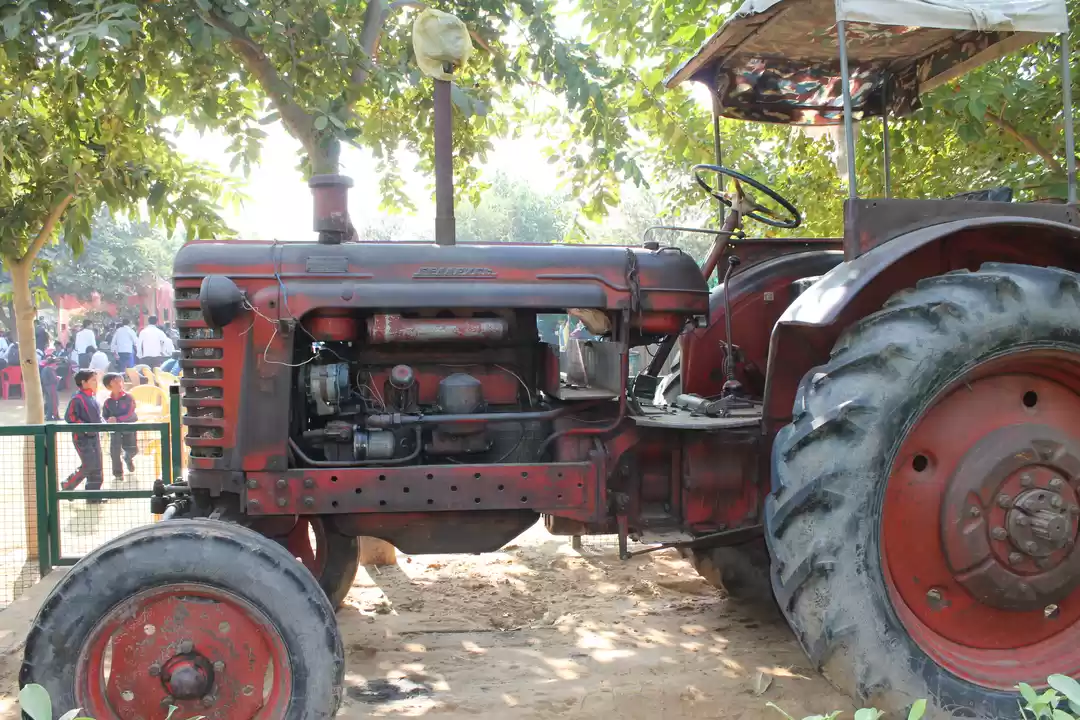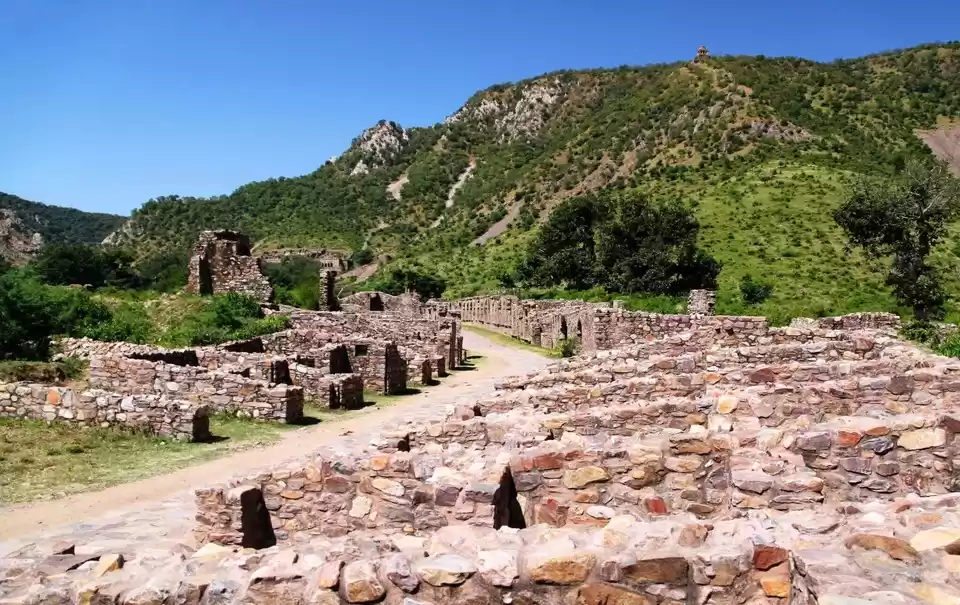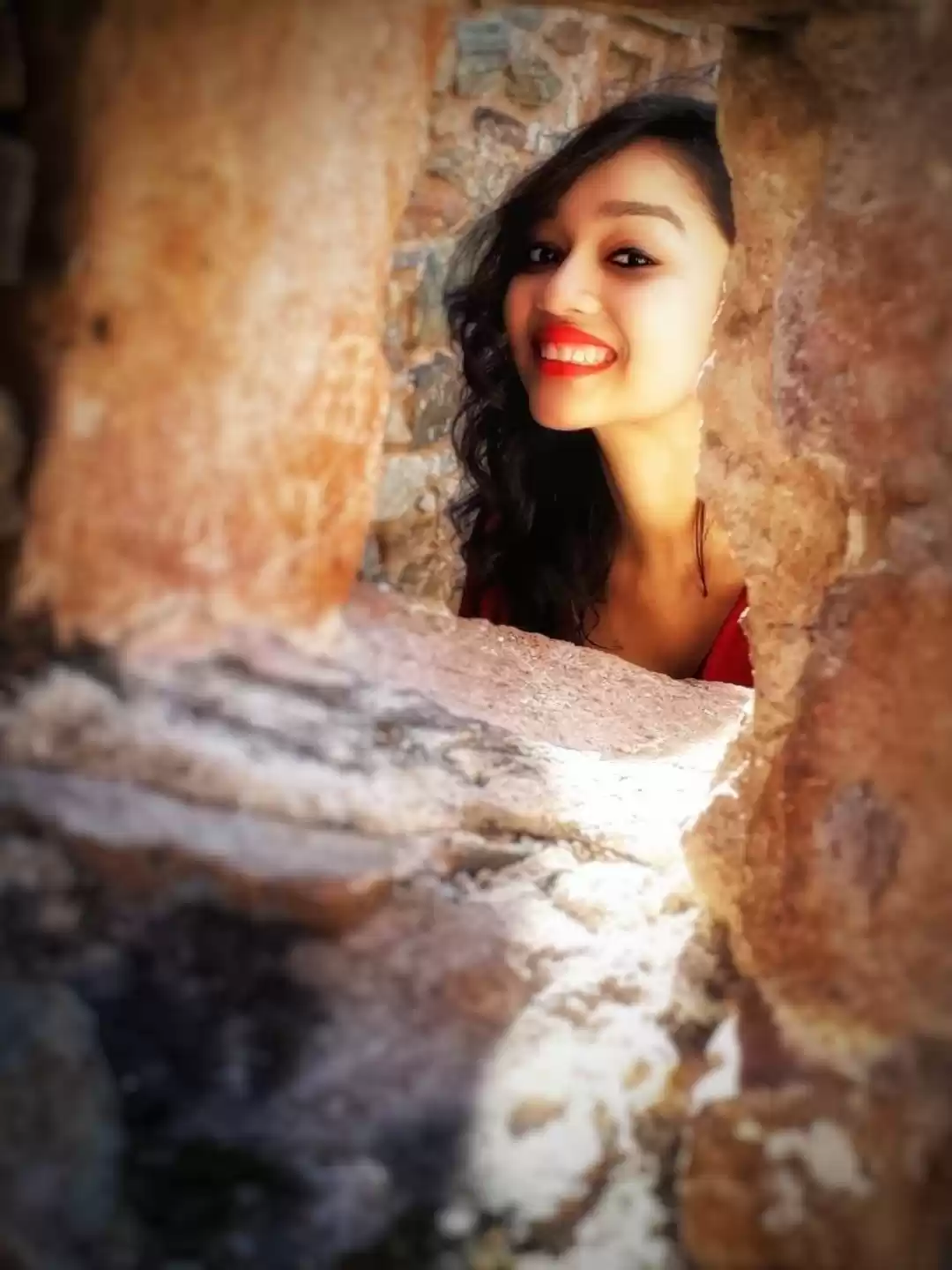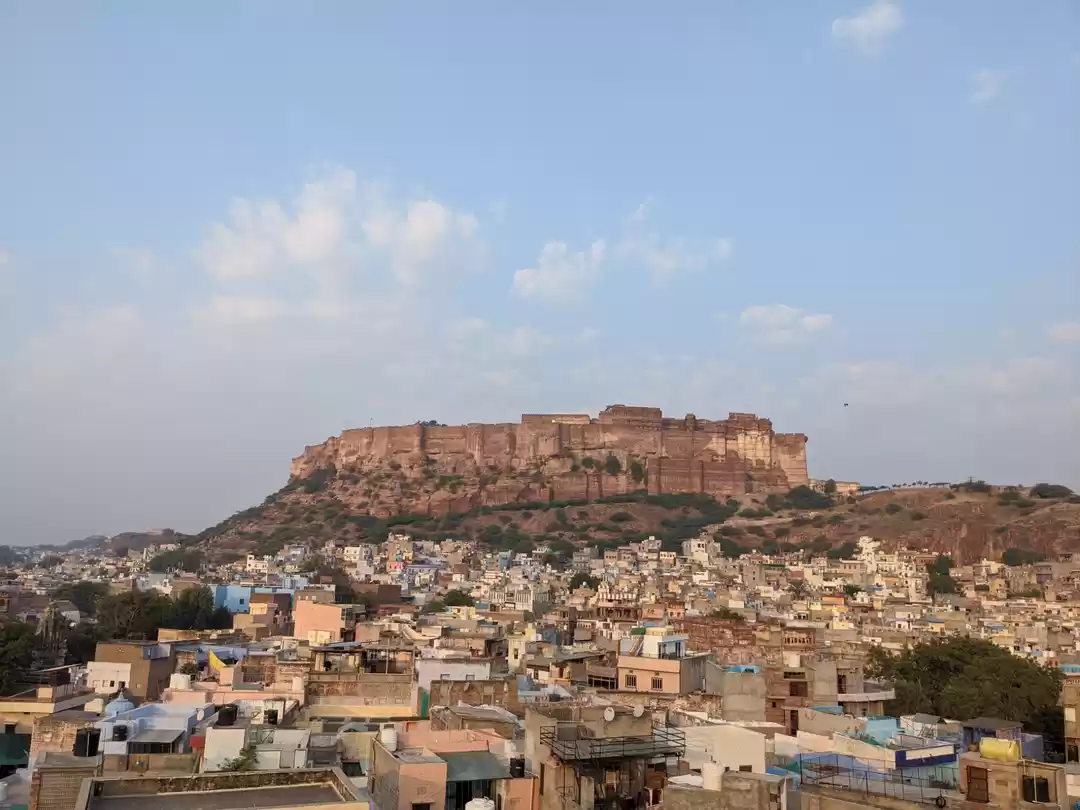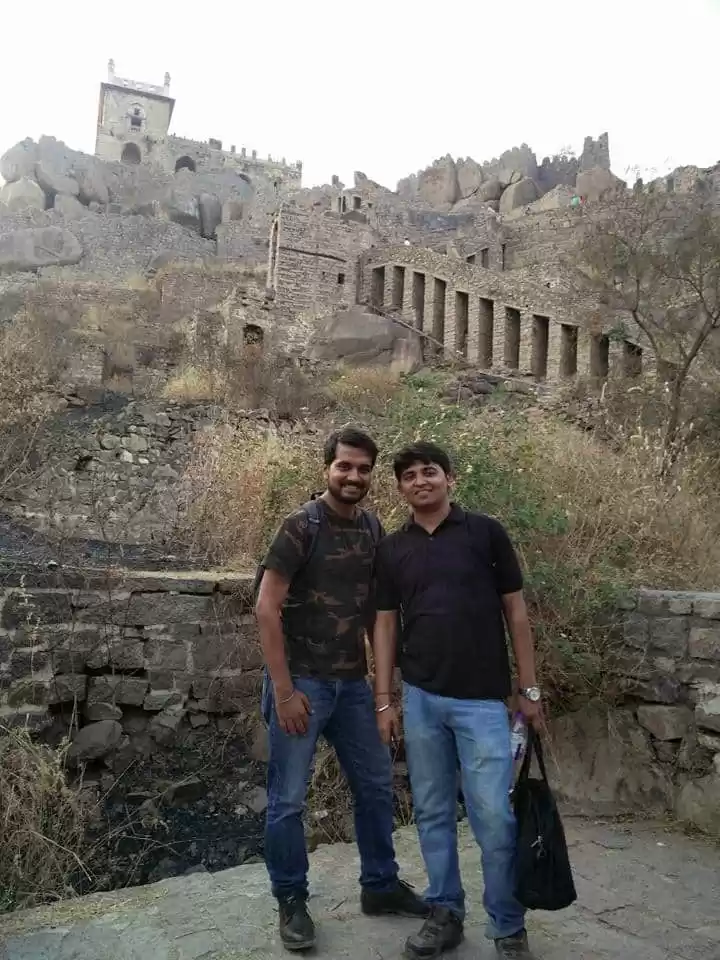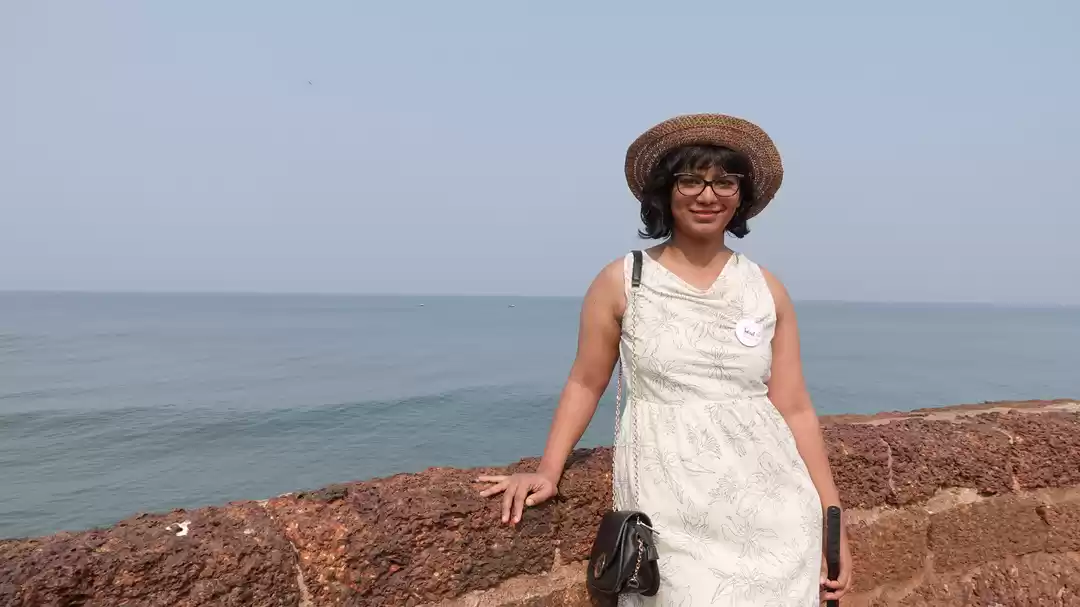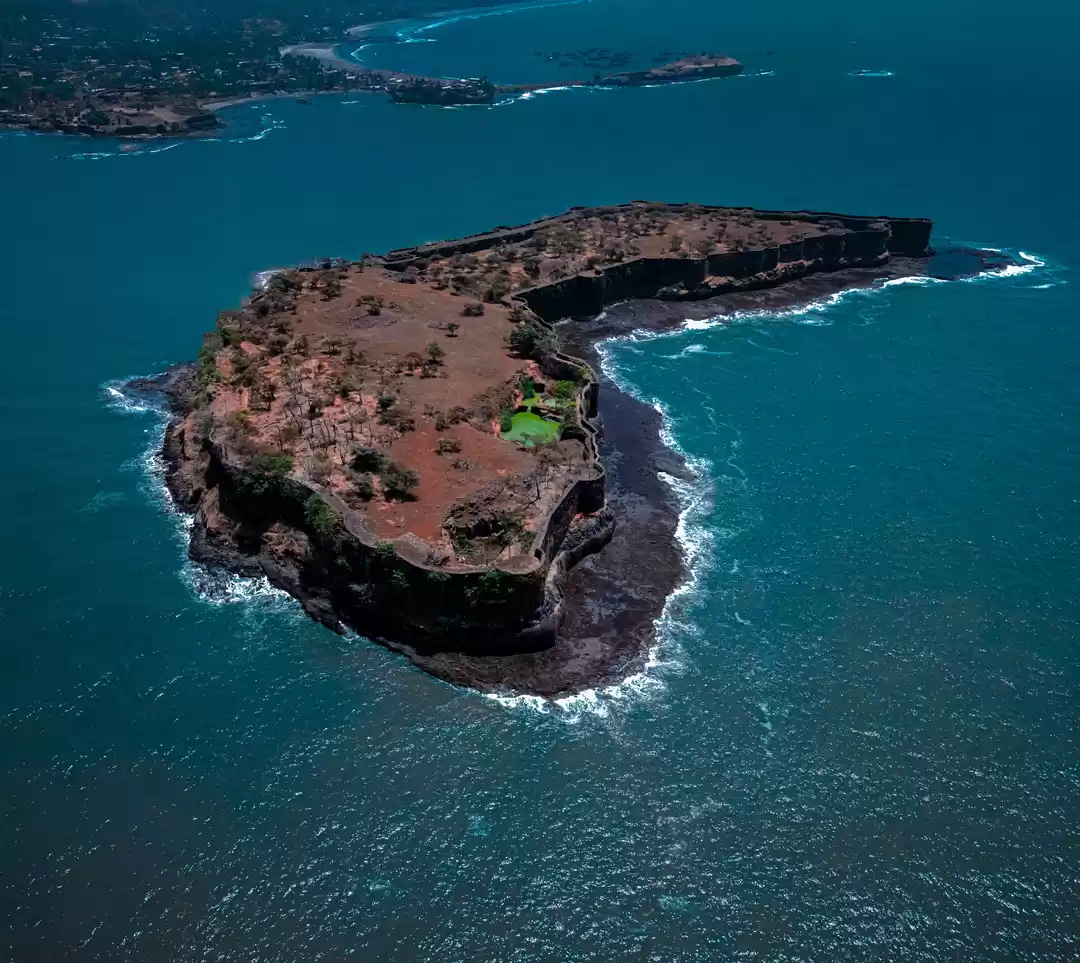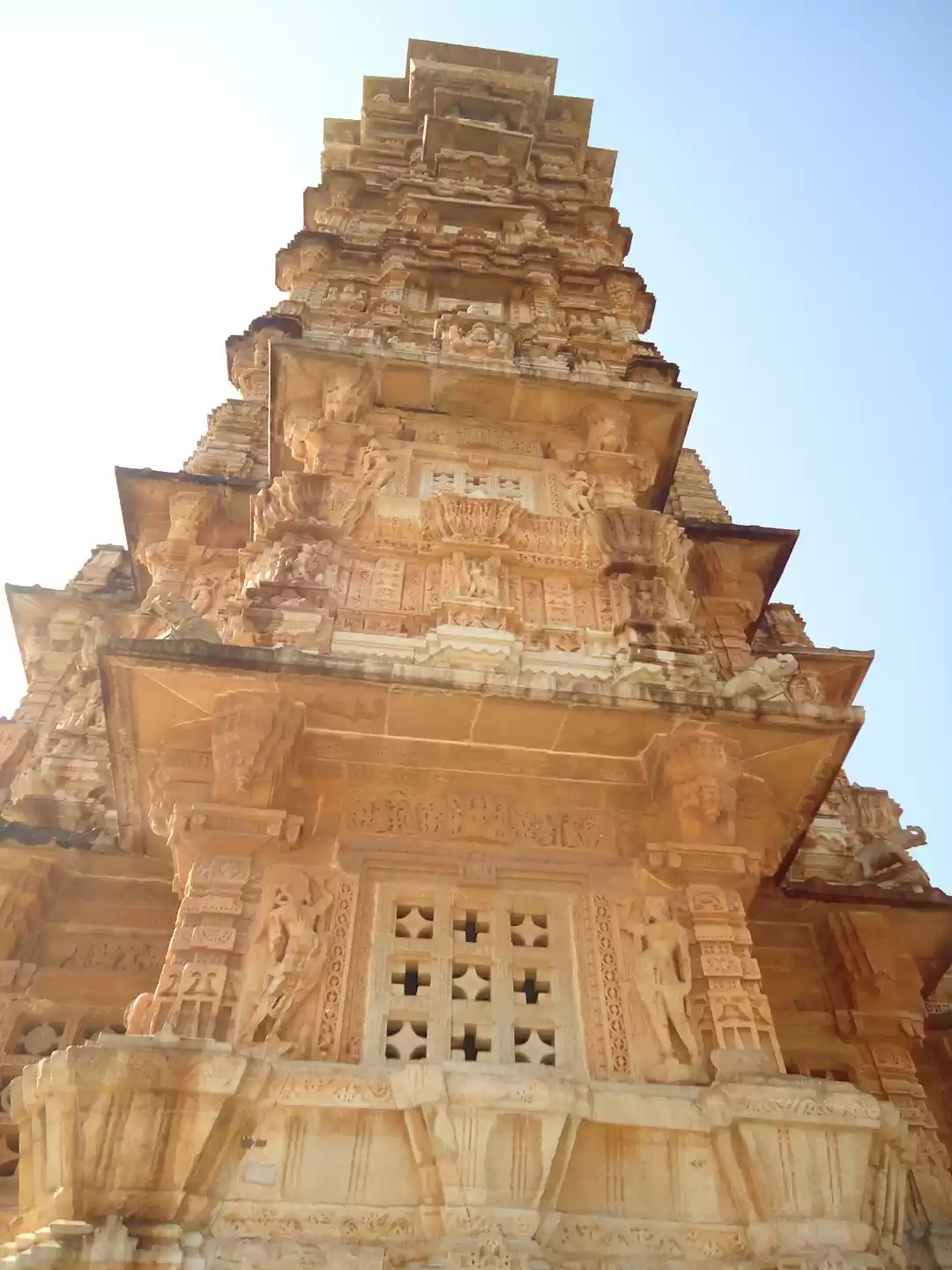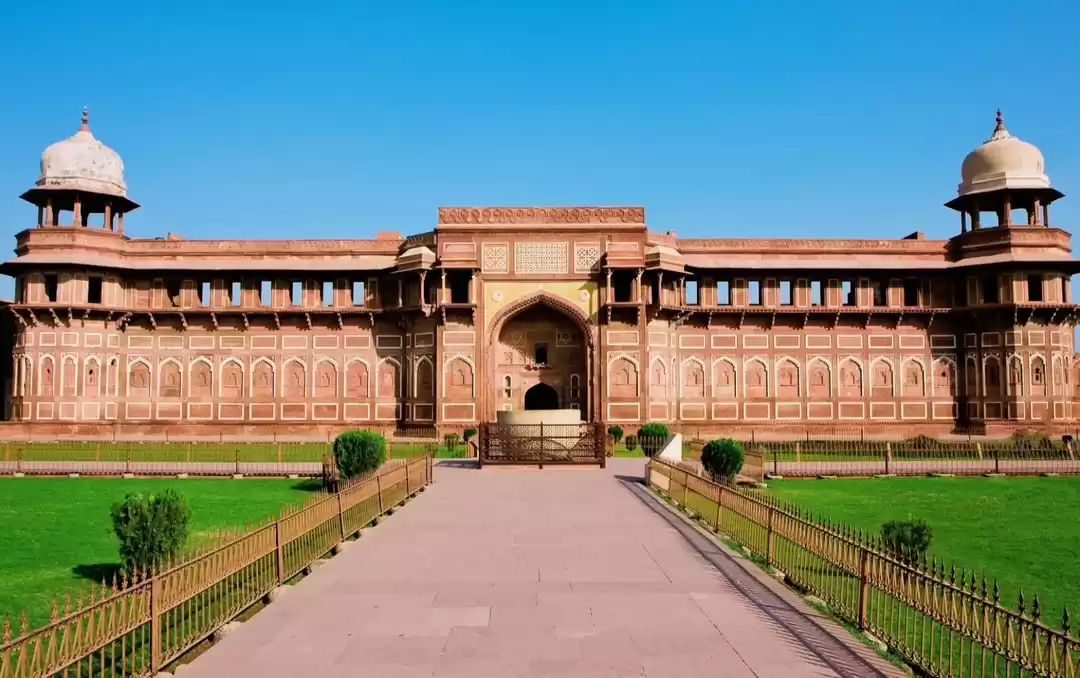If you are looking for a place that combines history, culture, and nature, then Pratapgad Fort is the perfect destination for you. Pratapgad Fort is a hill fort in Maharashtra, India, that was built by the legendary Maratha king Shivaji Maharaj in 1656. It is the site of the famous Battle of Pratapgad between Shivaji Maharaj and the Adilshahi general Afzalkhan in 1659, which is considered a turning point in Indian history. Pratapgad Fort is also a place of great significance for Hinduism and Indian culture, as it showcases the valor, wisdom, and devotion of Shivaji Maharaj and his followers.

Pratapgad Fort is not only a historical and cultural site, but also a scenic one. It is located near Mahabaleshwar, a popular hill station in the Western Ghats. The fort offers stunning views of the surrounding valleys, forests, and rivers. You can also enjoy the beauty of nature by trekking to the fort from different points or visiting the nearby attractions such as temples, lakes, and museums.
History and Significance of Pratapgad Fort
Before Construction
Pratapgad Fort was originally a small fort called Bhorpya, which was owned by the Adilshahi Sultanate of Bijapur. The Adilshahis were one of the major powers in the Deccan region of India, along with the Mughals and the Marathas. The Marathas were a warrior clan that rose to prominence under the leadership of Shivaji Maharaj, who challenged the authority of both the Adilshahis and the Mughals.
Shivaji Maharaj wanted to expand his territory and secure his borders from the attacks of his enemies. He realized that Bhorpya was strategically located on a hill that overlooked the Par pass, which connected the coastal Konkan region with the inland Deccan plateau. He decided to capture Bhorpya and build a bigger fort on it to control the pass and protect his kingdom.
You may like: 7 Forts In India You Must Visit
Construction
Shivaji Maharaj captured Bhorpya in 1656 with the help of his commander Moropant Pingale. He then entrusted the task of building a new fort on it to his prime minister Hiroji Indulkar. The construction of the new fort took about two years and cost about 15 lakhs rupees (about $200,000 in today’s value). The new fort was named Pratapgad, which means “the fort of valor”.
Pratapgad Fort was designed as a strong and durable structure that could withstand any attack. It had two parts: the upper fort and the lower fort. The upper fort was built on the top of the hill and had several buildings such as palaces, temples, storerooms, and watchtowers. The lower fort was built on the slope of the hill and had several bastions, walls, gates, and cannons. The fort also had a secret escape route that led to a nearby village called Kumbharghar.
Battle of Pratapgad
The most important event in the history of Pratapgad Fort was the Battle of Pratapgad that took place on November 10, 1659. This battle was fought between Shivaji Maharaj and Afzalkhan, who was sent by Ali Adil Shah II, the ruler of Bijapur, to capture or kill Shivaji Maharaj.
Afzalkhan was a powerful and experienced general who had conquered many forts and territories in his career. He had a large army of about 10,000 soldiers, including cavalry, infantry, artillery, and elephants. He also had a personal bodyguard of about 1,500 African slaves called Siddis.
Shivaji Maharaj had a smaller army of about 6,000 soldiers, mostly infantry. He also had about 300 cavalrymen led by his trusted commander Tanaji Malusare. He knew that he could not defeat Afzalkhan in an open battle, so he devised a clever plan to lure him into a trap.
Shivaji Maharaj sent a message to Afzalkhan, pretending to be afraid of him and willing to surrender. He invited Afzalkhan to meet him at the foothills of Pratapgad Fort, where he would hand over the keys of the fort and pay tribute. Afzalkhan agreed to meet Shivaji Maharaj, thinking that he had won the war without a fight.
However, Shivaji Maharaj had prepared a secret ambush for Afzalkhan. He had hidden his soldiers in the forests and hills around the meeting place. He also had a small group of soldiers with him, disguised as attendants. He wore a metal armor under his clothes and carried a concealed dagger called a wagh nakh (tiger claw).
When Afzalkhan arrived at the meeting place, he was accompanied by his bodyguards and a few officers. He was also wearing a metal armor under his clothes and carried a sword. He greeted Shivaji Maharaj with a hug, as per the custom. However, as he hugged him, he tried to stab him in the back with his sword. Shivaji Maharaj sensed his treachery and quickly pulled out his wagh nakh and slashed Afzalkhan’s stomach. Afzalkhan fell to the ground, bleeding profusely.
Shivaji Maharaj then signaled his soldiers to attack Afzalkhan’s army. The battle that ensued was fierce and bloody. Afzalkhan’s army was caught off guard and outnumbered by Shivaji Maharaj’s army. Many of them were killed or wounded in the first wave of attack. The rest of them fled in panic and confusion.
Shivaji Maharaj emerged victorious from the battle, having killed Afzalkhan and routed his army. He also captured many weapons, horses, elephants, and treasures from Afzalkhan’s camp. He then returned to Pratapgad Fort and celebrated his victory with his soldiers and subjects.
The Battle of Pratapgad was a landmark event in Indian history, as it marked the rise of Shivaji Maharaj as a powerful and independent ruler in the Deccan region. It also marked the decline of the Adilshahi Sultanate, which eventually fell to the Mughals in 1686. The battle also inspired many generations of Indians to fight for their freedom and dignity against foreign invaders.
Embark On Exciting Treks in Maharashtra To Explore These Gorgeous Forts!
Aftermath
After the Battle of Pratapgad, Shivaji Maharaj continued to expand his territory and consolidate his power. He built many more forts and towns in his kingdom, which came to be known as the Maratha Empire. He also fought against the Mughals, who were trying to conquer the Deccan region under their emperor Aurangzeb.
Shivaji Maharaj died in 1680 at the age of 53, leaving behind a legacy of courage, wisdom, and devotion. His son Sambhaji succeeded him as the ruler of the Maratha Empire. Sambhaji was also a brave and capable leader who fought against the Mughals until he was captured and executed by them in 1689.
Pratapgad Fort remained under the control of the Marathas until 1818, when it was surrendered to the British East India Company after the Third Anglo-Maratha War. The British used Pratapgad Fort as a prison and a military base until 1947, when India gained its independence from British rule.
Today, Pratapgad Fort is a protected monument under the Archaeological Survey of India (ASI). It is also a popular tourist attraction that attracts thousands of visitors every year who want to see and learn about its history and culture.
How to Reach and Visit Pratapgad Fort
From Mahabaleshwar
Pratapgad Fort is located about 24 km away from Mahabaleshwar, which is one of the most popular hill stations in Maharashtra. Mahabaleshwar is well connected by road, rail, and air with major cities in India.
By Road: You can reach Mahabaleshwar by bus or car from Pune (120 km), Mumbai (260 km), Satara (55 km), or Kolhapur (180 km). There are regular state-run and private buses that ply between these cities and Mahabaleshwar. You can also hire a taxi or drive your own car to Mahabaleshwar.
By Rail: The nearest railway station to Mahabaleshwar is Satara, which is about 55 km away. You can take a train from Pune, Mumbai, or Kolhapur to Satara and then take a bus or taxi to Mahabaleshwar.
By Air: The nearest airport to Mahabaleshwar is Pune, which is about 120 km away. You can take a flight from Delhi, Bangalore, Hyderabad, or Chennai to Pune and then take a bus or taxi to Mahabaleshwar. From Mahabaleshwar
Once you reach Mahabaleshwar, you have two options to reach Pratapgad Fort:
By Bus: You can take a state-run or private bus from Mahabaleshwar to Pratapgad Fort. The bus fare is about Rs. 50 per person and the journey takes about an hour. The buses are available from 8 am to 6 pm and depart every 30 minutes from the Mahabaleshwar bus stand. The bus will drop you at the base of the fort, from where you have to climb about 500 steps to reach the entrance of the fort.
By Car: You can also drive your own car or hire a taxi from Mahabaleshwar to Pratapgad Fort. The road is well-maintained and scenic, passing through the lush green valleys and forests of the Western Ghats. The car fare is about Rs. 1000 for a round trip and the journey takes about 45 minutes. You can park your car at the base of the fort, from where you have to climb about 500 steps to reach the entrance of the fort.
Timings
Pratapgad Fort is open for visitors from 10 am to 6 pm every day. The entry fee is Rs. 25 per person for Indians and Rs. 300 per person for foreigners. You can also hire a guide for Rs. 200 per hour, who will explain the history and significance of the fort and its attractions.
Trek Routes
If you are feeling adventurous, you can also trek to Pratapgad Fort from different points. There are three main trek routes to Pratapgad Fort:
From Wada: This is the easiest and shortest trek route, which takes about an hour to complete. The trek starts from Wada village, which is about 4 km away from Pratapgad Fort. The trail is well-marked and passes through a forest and a stream. The trek ends at the lower fort of Pratapgad Fort.
From Bhavani Temple: This is a moderate trek route, which takes about two hours to complete. The trek starts from Bhavani Temple, which is about 8 km away from Pratapgad Fort. The temple is dedicated to Goddess Bhavani, who is believed to be the patron deity of Shivaji Maharaj. The trail is steep and rocky and passes through a dense forest and a waterfall. The trek ends at the upper fort of Pratapgad Fort.
From Kumbharghar: This is a difficult trek route, which takes about three hours to complete. The trek starts from Kumbharghar village, which is about 12 km away from Pratapgad Fort. The village is famous for its pottery and handicrafts. The trail is narrow and slippery and passes through a jungle and a valley. The trek ends at the secret escape route of Pratapgad Fort.
If you decide to trek to Pratapgad Fort, make sure that you are physically fit and well-equipped with water, food, shoes, clothes, and first-aid kit. You should also avoid trekking during the monsoon season (June to September), as the trails become muddy and slippery.

Sightseeing Attractions on Pratapgad Fort
Pratapgad Fort has many sightseeing attractions that showcase its history, culture, and architecture. Here are some of the main attractions that you should not miss:
Temples
Pratapgad Fort has several temples that are dedicated to different gods and goddesses. Some of the most prominent temples are:
Shivaji Maharaj Temple: This temple is located on the upper fort and was built by Shivaji Maharaj himself in 1659 after his victory over Afzalkhan. It houses a statue of Shivaji Maharaj in his coronation attire, sitting on a throne with a sword in his hand. The temple also has a gallery that displays paintings and weapons related to Shivaji Maharaj’s life and achievements.
Bhavani Temple: This temple is located on the lower fort and was built by Shivaji Maharaj’s mother Jijabai in 1661. It houses an idol of Goddess Bhavani, who is believed to be the patron deity of Shivaji Maharaj and his family. The temple also has a sword that was given by Goddess Bhavani to Shivaji Maharaj in a dream before the Battle of Pratapgad.
Shiva Temple: This temple is located on the lower fort and was built by Moropant Pingale in 1656. It houses a lingam (symbol of Lord Shiva) that was brought from Kashi (Varanasi) by Shivaji Maharaj’s father Shahaji Raje. The temple also has a pond that is fed by a natural spring.
Statues
Pratapgad Fort has several statues that commemorate the heroes and events of the Battle of Pratapgad. Some of the most notable statues are:
Shivaji Maharaj and Afzalkhan Statue: This statue is located on the lower fort and depicts the scene of the encounter between Shivaji Maharaj and Afzalkhan. It shows Shivaji Maharaj slashing Afzalkhan’s stomach with his wagh nakh, while Afzalkhan tries to stab him in the back with his sword. The statue was installed in 1959 by Yashwantrao Chavan, the then chief minister of Maharashtra, to mark the 300th anniversary of the battle.
Tanaji Malusare Statue: This statue is located on the upper fort and depicts the brave commander of Shivaji Maharaj, who led the cavalry charge against Afzalkhan’s army. It shows Tanaji Malusare riding a horse and wielding a sword, while his turban flies in the air. The statue was installed in 1960 by Balasaheb Thackeray, the founder of Shiv Sena, a political party in Maharashtra.
Sambhaji Maharaj Statue: This statue is located on the upper fort and depicts the son and successor of Shivaji Maharaj, who fought against the Mughals until he was captured and executed by them. It shows Sambhaji Maharaj sitting on a horse and holding a spear, while wearing a crown and a necklace. The statue was installed in 1980 by Vasantdada Patil, the then chief minister of Maharashtra, to mark the 300th death anniversary of Sambhaji Maharaj.
Lakes/Bastions/Cannons/Museums
Pratapgad Fort also has other attractions that add to its beauty and charm. Some of them are:
Lakes: Pratapgad Fort has two lakes that are located on the upper fort. They are called Sadar Lake and Kadelot Lake. They are natural reservoirs that store rainwater and supply it to the fort. They also offer a refreshing view of the greenery and wildlife around them.
Bastions: Pratapgad Fort has seven bastions that are located on the lower fort. They are named after the seven days of the week: Someshwar (Monday), Rameshwar (Tuesday), Mangeshwar (Wednesday), Ganeshwar (Thursday), Bhairaveshwar (Friday), Shukreshwar (Saturday), and Shaniwar (Sunday). They are fortified structures that provide defense and surveillance to the fort.
Cannons: Pratapgad Fort has several cannons that are located on both the upper and lower forts. They are made of iron or bronze and have different names and sizes. Some of the famous cannons are: Kalal Bangadi (the largest cannon on the fort), Landa Kasam (the cannon that killed Afzalkhan’s elephant), Chawri (the cannon that was used to fire at Mahabaleshwar), and Bhavani Mata (the cannon that was gifted by Shivaji Maharaj to Goddess Bhavani).
Museums: Pratapgad Fort has two museums that are located on the upper fort. They are called Pratapgad Darshan Museum and Pratapgad Smarak Museum. They display various artifacts, models, paintings, weapons, coins, documents, and photographs related to Pratapgad Fort and its history.
Conclusion
Pratapgad Fort is a place that offers a unique blend of history, culture, and nature. It is a place that tells the story of Shivaji Maharaj and his valor, wisdom, and devotion. It is a place that showcases the heritage and architecture of the Maratha Empire. It is a place that invites you to enjoy the beauty and tranquility of nature.
If you are looking for a place that can enrich your mind, soul, and senses, then Pratapgad Fort is the place for you. So, what are you waiting for? Plan your trip to Pratapgad Fort today and experience its history and culture for yourself. You will not regret it.
























